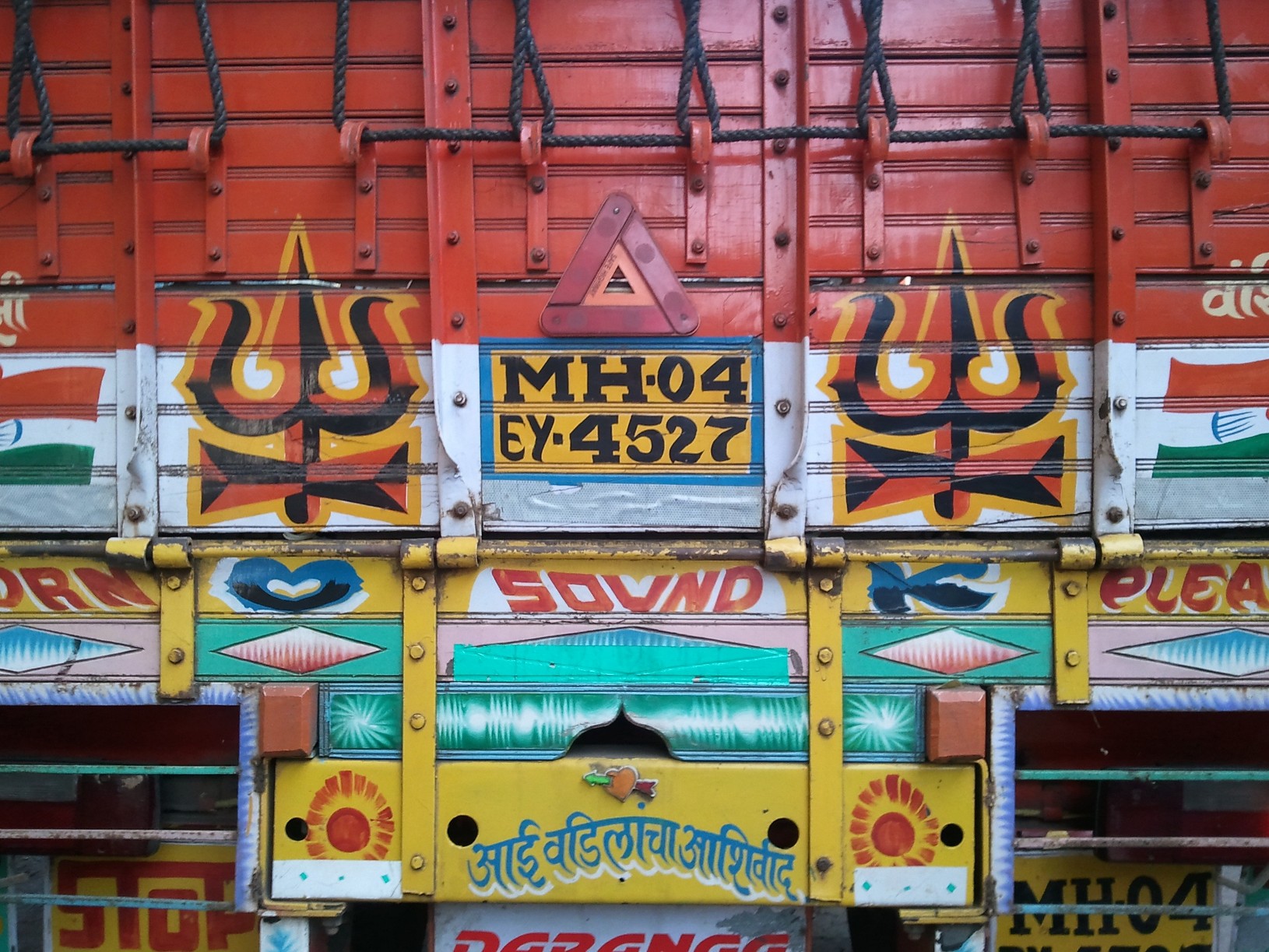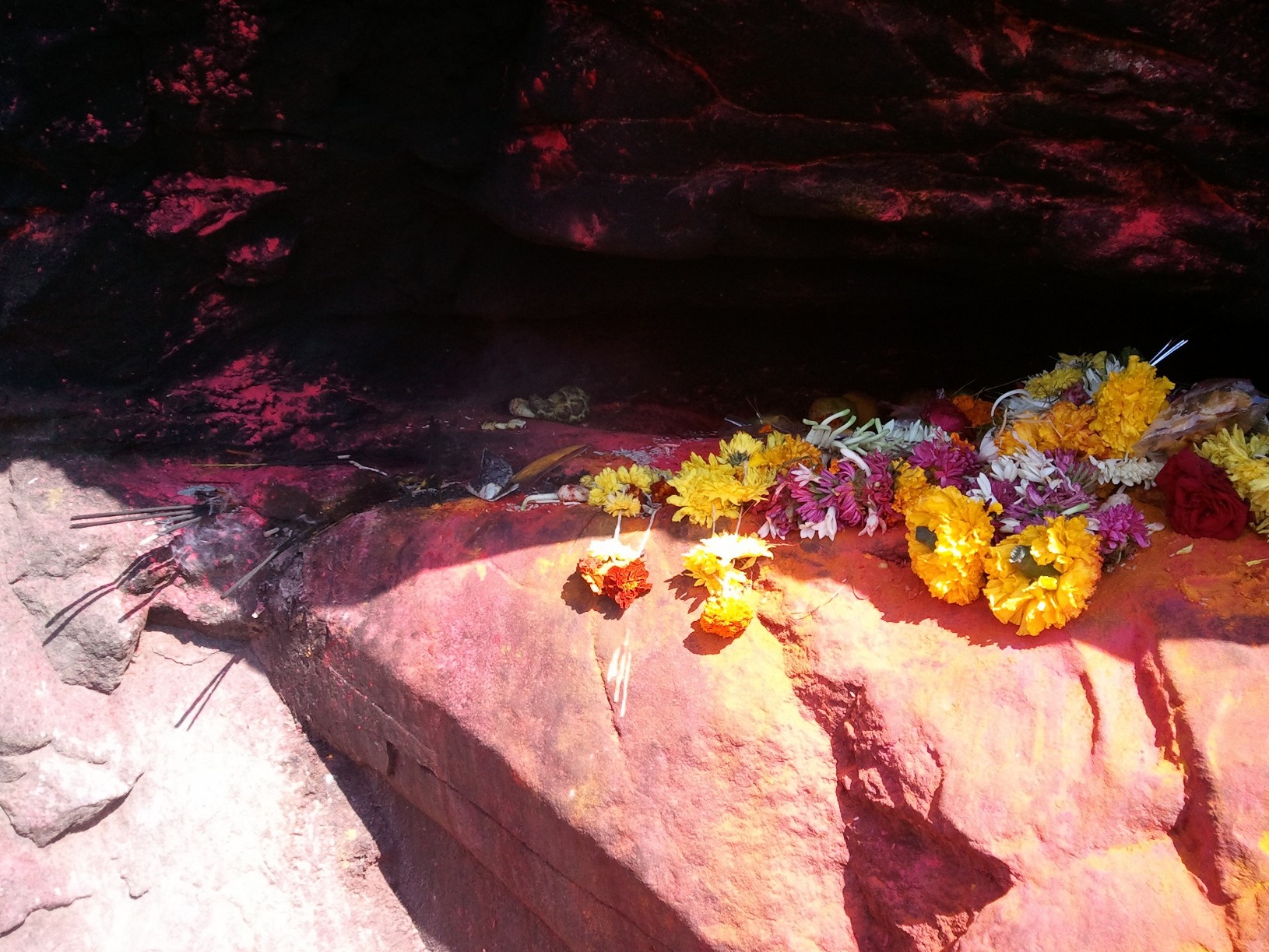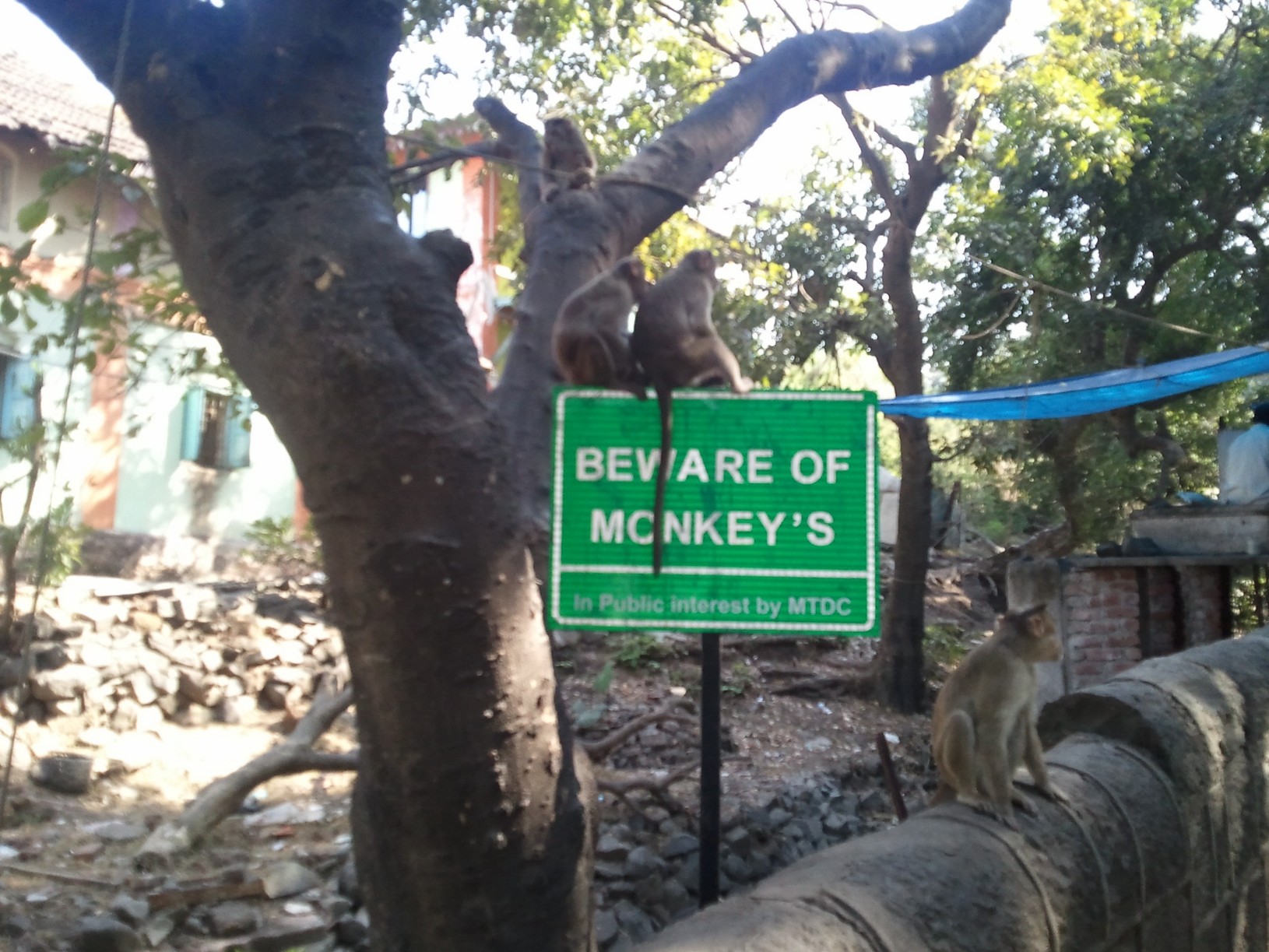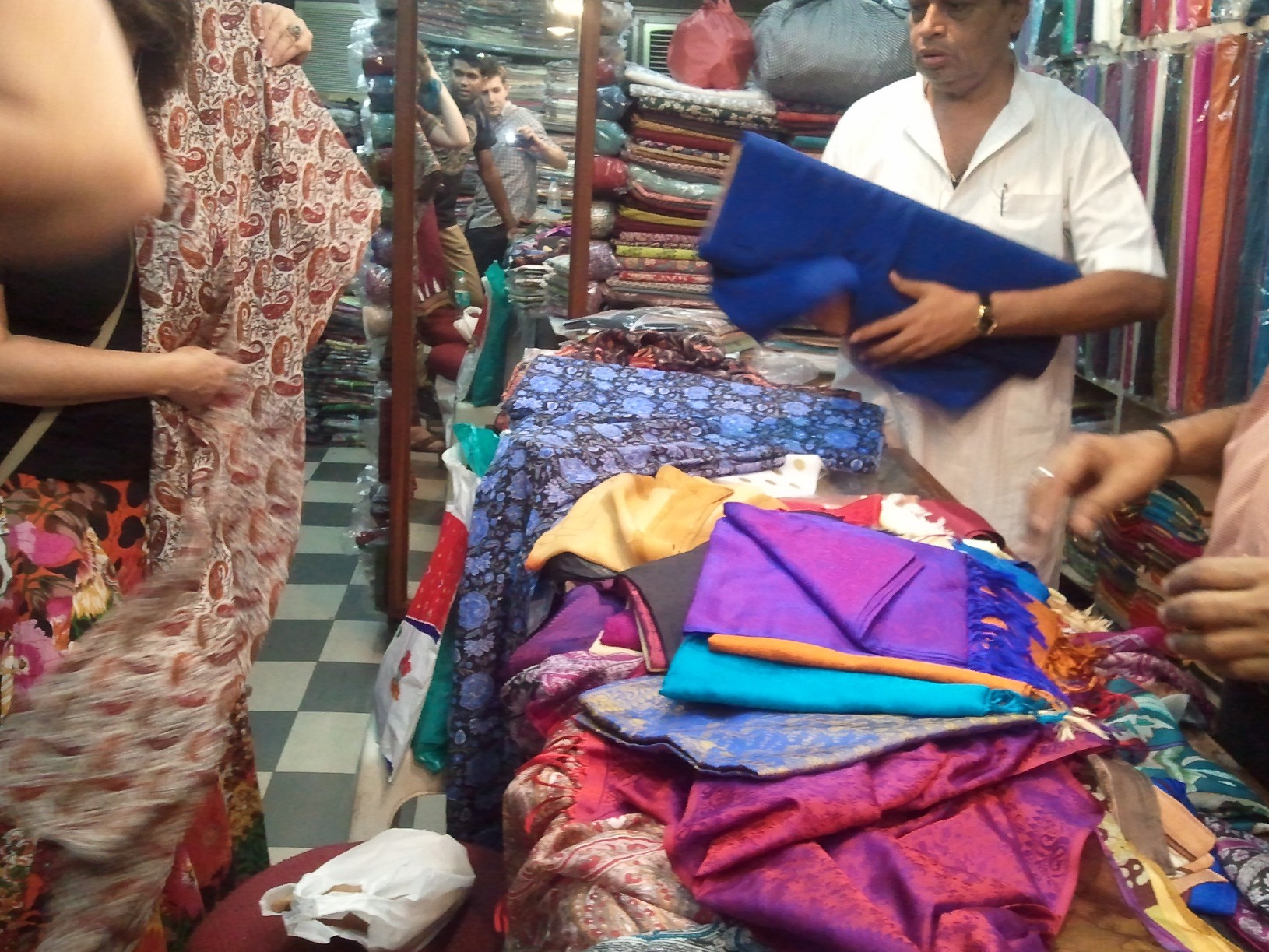
Bombay1 taxi2 drivers have only a general plan of the city streets in their heads, and most buildings have no address. It is thus unsurprising that my request to be delivered to the Marigold Residency “close to Marol Maroshi road, near the airport” is not met with success. After passing up and down the road several times we eventually locate an unsecured wireless network. Google directs me to a nearby intersection we have already crossed twice; the hotel is nowhere in sight. Visibly distressed when I nonetheless express my intention to get out of the taxi (we have mostly been communicating in grunts and gestures), he points toward at an unsanitary shack advertising itself as a hostel. “Ya Marol,” he says morosely, “ya residency.” This is followed by a stream of Hindi which I imagine means approximately “There is no other hotel anywhere on this block, you poor fool.” A little bit of questioning at nearby businesses eventually directs me to the hotel. Still dressed for the London winter, I begin sweating my way down the road in the midday sun. Once settled, showered and changed, I resolve to meander slowly in the direction of the IIT campus, hoping to arrive just in time to catch the official bus back to my hotel.
Bombay makes all other cities look gray—everything is orange or blue or green, every cargo truck hand-painted with flags or flowers or women in prayer. My route takes me down leafy streets where forty-story apartment buildings erupt from patches of untamed jungle, beside desperate slums pitched against pipelines and railroad fences, and through grimy lakeside shopping districts. And the smell! Sweat, toasted rice, livestock, cardamom, open sewers and cloves—garbage and incense—excrement and hot oil.

I come to IIT earlier than planned, in time for the last session of talks (boring) and an opening-gala-slash-talent-show featuring local students and various members of the computational linguistics community, about which the less said, the better. (The best—indeed, the only good act is a Sanskrit song I would not be tempted to describe as hauntingly beautiful if not for the performances that surround it.)
I manage to miss my bus, and so take an auto back. As the rickshaw whizzes homeward I jam one arm between my legs, grasping for dear life at the edge of my seat. We swerve; we halt; horns blaze. Men in knit skullcaps shake fists at us. As it tumbles toward the ground, my driver’s cigarette (when did he light a cigarette? when did his hands leave the handlebars?) traces a saffron crescent in the air.
May I be preserved against death by banyan. IIT’s main thoroughfare is lined by the warped corpses of trees strangled gradually, trunks disappearing into the figs’ puckering sphincters—nightmares in green flesh.
Lift up a typical cinderblock American university, drown it in paint, then deposit it in the jungle and abandon it for five or ten years—this is IIT’s Bombay campus. Cows roam freely down roads not planted but forested; through breaks in the leaves, cheerful concrete buildings in primary colors announce faculties of electrical or aerospace engineering with bilingual signage.
After an invited lecture delivered by an eminent and incomprehensible Japanese academic and a few rounds of talks, some members of my old research group persuade me to join them on the commuter train downtown. On the outbound leg, the train is spacious, clean, and well-ventilated. At intervals beggars pace the aisles, keeping time to (genuinely) haunting songs shaking cups full of change.
The old city (barely more than a century but already crumbling) is a Victorian bureaucrat’s dream of what the seat of Orienal administration ought to look like: sturdy English buildings embellished with arabesques and filigreed temple domes. The streets are a crush of salespeople and their prospective targets. Here, too, are beggars—I am still visited by the image of a shriveled woman, hands burnt to blackened stumps and faceless behind her covering scarf.
Pauli’s exclusion principle is surely violated on the return train to Powai. It is packed beyond anything conceivable. Benches which held three people apiece on the way down are made to hold five; in the half-foot of clearance between the feet of bench sitters stand still more travelers. At every station we’re greeted by the frantic scrabble of twenty hands against the car’s metal grating before the train even slows down, as even deeper throngs of commuters attempt to gain a foothold on the car. We are forced to stand up three stops before our destination and batter out a passage to the door with fists and elbows. As the train enters the station we are ejected with what I swear is an audible pop by the internal pressure of the carriage.
There is a mosquito in my room which seems to evade every attempt I make to swat her.
The conference management has transcended incompetence; they are sublime. Today is an organized “excursion” in lieu of talks which turns out, in fact, to comprise close to ten hours of hot, noisy bus transit and less than an hour of sightseeing. Our first stop is a cavernous Buddhist temple cut into a rocky hillside. The winding ascent to the caves is packed with stalls hawking packages that might be snacks, devotional offerings or both. Plastic tarps shade the walkway and music plays over tinny loudspeakers.
Immediately adjacent to the rather unremarkable caves (packed with computational linguists) is a Hindu temple (packed with Hindus) which serves as the receiving bay for the goods sold on the path. A trail wanders path caves and temple, studded occasionally with small shrines, and I find myself briefly alone and exposed on a narrow ledge coated in flourescent orange powder, looking out over the valley below.

Thre is little to say about the rest of the day. We are so tired (and the hour so late) when we finish lunch that entire busloads of conference-goers beg to be taken back to the hotel. The organizers assure us that this is strictly impossible, and order us to get back on the bus. We then drive an hour to a cluster of caves even less impressive than the first, where we are afforded fifteen minutes (five to walk up the hill, five to absorb the beauty of the spectacle, and five to walk down again) before beginning the three-hour-long ride home. It is already dark when we reach the caves, and those who still care enough to try are reduced to inspecting carvings by the light of their cell phone screens.
The mosquito is growing tactical—tonight she waits until the lights are out to manifest herself, and promptly hides when they are turned on again.
Finally, a day of proper talks—two excellent parsing papers in the morning, and mine in the afternoon. We’re caught unprepared by a complaint that we should have compared our approach to translation to another semantic parsing / generation system, and are told we’re incorrect when we claim the system was never used for translation experiments. A quick search indicates that the experiments are buried in the “future work” section of a related Ph.D. thesis. I suppose I will have to start reading future work sections now.
The evening is uneventful. After a distinctly non-amateur tabla performance, we convene at the nearby Rude Lounge, a bar which no auto driver seems able to locate. We eventually find it. It is cold, smelly, noisy, decorated with American movie posters. At one point a mouse scurries across the floor. We take over a long table on the first level, put away many pitchers of beer, and then go home.
Tonight I see no sign of the mosquito, but awake covered in bites.
By the end of the morning poster session I am done with the conference. The previous night I’d talked about trying to go sightseeing with some former lab-mates, but had been unable to contact them without a working cell phone; on-site I am handed one by another member of the lab and instructed to call. When I meet them at the IIT gates the “group trip” turns out to consist of my old PI, her friend from home, and one Indian student who is showing them around. I’m uncomfortable and try to beg out, but they command me to get in the car.
We head towards a nearby island called Elephanta, the site of even more cave-temples (I am amazed that anyone still has an appetite for caves, but am certainly not going to complain at this point). The ferry ride to the island is pleasant, and the haze so thick about Bombay that within ten minutes of casting off the city skyline is obliterated. Cargo ships materialize without warning out of the fog.
Here, as before, the caves are elevated and accessed only by a winding path lined with stalls; here the stalls are of a profane bent, selling graphic T-shirts instead of cloth offerings and popsicles instead of rice. The island is covered in monkeys, which scamper along the tarp roofs and dangle from nearby trees, descending occasionally to snatch bananas or biscuits from the hands and bags of unsuspecting visitors. The first cave we enter upon reaching the top features a breathtaking rendering of Shiva, manifold arms almost wholly intact, dancing destruction on the heads of demons. A guide we are coerced into hiring points out the salient divinities in each carving, and offers a syllable-by-syllable exegesis of each god’s name which I assume to be authentic until he performs the same procedure on the letters of the English “God”.3

Upon returning to the city we drop the adults off for dinner and launch into an exploration of the local nightlife. We have retained the cab, which begins to slowly carry us through rush-hour traffic to trendy Juhu Beach. We stop to acquire beer (when I express surprise that we can drink in a moving vehicle, my travelling companion snorts and says “This is India!”), which spurs a brief conversation on the age of legality for various actions, transacted half in English and half in Hindi, among travellers and driver. Driver was married when he was twenty-one and his wife fourteen.
Gone are the filthy hovels and cinderblock apartments of the suburbs—all the buildings here are glass and steel. But for the typography we could be in any other coastal city on earth; indeed, Juhu reminds me of nowhere more than Venice Beach. After sending the cab driver on his way and meeting some friends of my guide’s (also Indian, but met at Columbia) we retire to a beachside hotel bar where the drinks are more expensive than New York. I feel at once guilty and somehow relieved. The newcomers all work at local nonprofits and NGOs, and speak passionately about organizing schools in rural Rajasthan or delivering contraceptives to women in Mumbai slums. I don’t understand they reconcile the thought of their destitute beneficiaries and the memory of the wretched suburbs with the luxury of our surroundings, how they do not squirm, as I do, in their leather seats.
At one the bars close, but certain members of our party are not done. We get into an auto; after a brief transaction with the mischievous-looking driver we are transported to the underside of an overpass where a nervous man delivers a bag full of illicit beers. We spend much of the next hour wandering the near-deserted streets in our rickshaw. We stop first to purchase cigarettes and chai from a young woman in a sari. She is the image of absolute cool: legs crossed, one hand stirring her vat of tea, one on the cash box, nose tipped ever so slightly in the air. Hungry, we also acquire “Chinese food” from a street vendor and smear garlic, greasy and delicious, on our sleeves and the seat of the cab.
Returning home at five, I catch the mosquito by surprise and reduce her to a red smear on the bathroom wall.
I wake five hours later in horror at the sudden realization that I have mis-booked: I have two hours to check out of the hotel but twenty-four until my flight. I decide I will worry about accommodations for my last night later, and leave. I retrace my route from the first day; this time it is the poverty rather than the novelty of the view that strikes me. I am embarassed by how easily I forgot that it is not simply a cultural preference for corrugated aluminum and open sewers that gives the suburbs their appearance; that the water does not become clean simply because the locals can drink it; that the child who begs me for money may someday starve to death. I have always been troubled by the subway advertisements that promote charitable causes by making pornography of poverty, and I did not come to India hoping to affirm some humanitarian impulse. I am bewildered by the walk. When I am later asked about my trip to India this will be my conversation-starter, and the sight of slums built up against the sides of sturdy middle-class apartment buildings my default anecdote the trip, but I do not know what to do with what I have seen.
I eat lunch in a restaurant by IIT, and make plans to meet in the afternoon with the Columbians remaining in Mumbai. I take the train downtown again, stopping for a cup of chai almost certainly made with curdled milk. I am loath to use my cell phone, so I’m able to make only intermittent contact with my companions over email. Getting off the train I discover an instruction to head towards the Haji Ali Dargha and so turn around and head north again.
The Masjid train station is farther than I realized from Haji Ali, and in the press of evening shopping traffic I am quickly disoriented and start walking in entirely the wrong direction. Twenty feet from the train station the neighborhood resembles Cairo—narrow streets jammed with men in flowing white, and the florid call to evening prayer from six directions. Eventually I give up and attempt to find a cab. The first few refuse to take me, and in accordance with my faulty mental map I try to insist on a price that is far too low. Eventually I find a willing driver and a manageable fare and am conducted slower than walking to my destination.

I am forty minutes late. I hunt around the entrance to the causeway leading to Haji Ali and the nearby juice bar that was supposed to serve as our meeting point, with no success. I resign myself to calling only to find that I have no cell service. Just as I turn around to leave I hear a voice behind me; they, too, were stuck in traffic, and have only just arrived. We proceed to the holy site. Before I realize what is happening I am the only white person in a line of men waiting to pay respects at the tomb, now too late to turn back. I make a donation, I genuflect awkwardly, I am beaten over the sholders with some kind of sacred feather-duster, I am released into the fetid sea wind. The Egyptian in our party (who, as a woman, was only permitted to spectate) says it is like no Muslim holy site she has ever seen.
The remainder of the evening features a rooftop bar, the Bombay Gymkhana (“you mean you don’t have these in New York?”), a ride in a chauffeured private car, a walk along the Queen’s Necklace and then past the bodies of the sleeping homeless.
Bombay or Mumbai? According to a local, there was never a settlement named “Mumbai” at the current site of the city—it was christened “Bombay” by the British after the name of a local temple. After the ejection of the colonizers the government of Mumbai found itself saddled with an embarassing profusion of structures which recalled imperial rule, a problem it solved by renaming all of them after the founder of the Maratha Empire. Hence the Chhatrapati Shivaji International Airport; the Chhatrapati Shivaji National Museum (formerly “Prince of Wales”); the Chhatrapati Shivaji railway terminus (formerly “Victoria”). ↩
In fact, all of the three classes of private transport for hire: autorickshaws (“autos” or occasionally “tuktuks”), perilous but inexpensive three-wheeled carriages, taxis, which do not have air conditioning, and cabs, which do. ↩
“G, generator! O, operator! D, destroyer!” ↩